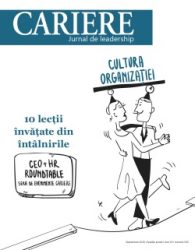Conveying your corporate message effectively

Public Relations is changing; it is definitely much more than sending press releases and cultivating good relations with the Press. The PR executive needs specialized knowledge, market awareness, and digital familiarity. But most of all they needs to understand that a new era evolves; an era where public relations should not only be perceived as a set of processes but also as a field where the practitioner should create and defuse content. I have been teaching and practicing public relations and marketing for many years (more than 15); during this long period of time I have seen the transformation of Public Relations from a set of processes to the creation of content.
In today’s global business environment, Public Relations have a huge impact in the strategic-decision making process, being the core component in conveying the message across the company’s departments, stakeholders, and even borders.
As it is stated by a lot of PR specialists the success of a communication is a function of the message received. The messages that communicate to the widest audience are those which appeal to the lowest common denominator –human emotions. Human emotions make the message to be felt, not only heard (Shah, 2011).One interesting quote has been stated by Nelson Mandela which clearly emphasized the importance of communication: “If you talk to a man in a language that he understands, that goes to his head. If you talk with him in his language, that goes to his heart!” Everybody knows that is very important the fact that before you want to convey a message, it’s best to know the purpose of why you are doing this action. Because we are talking about corporate messages, the basic step is to know what the company stands for and what does it want to express to its target audience.
Nowadays, public relations plans are more concentrated on the target audiences, the ways in which consumers can be engaged in the campaign and also, the understanding of the potential consumers. The attitudes and behaviour of consumers are carefully analyzed by the PR planners. A good planning can lead to a better advertising campaign as well.
It is said that Public Relations is better than advertising at conveying a message or even building a brand. The PR strategies usually are focused on the brand strategy, corporate communications, cause marketing, crisis communication, media strategy, event management or grassroots marketing. Usually a PR strategy means more than writing a press release and do a follow-up with the journalists. That’s why it’s not only about media when talking about public relations. First of all, researching about your target audience, developing a database of contacts, decide which is the PR story that needs to be communicated, writing an actual press release, establishing relationships with journalists and media in order to familiarise them with the company and the company’s purpose are some of steps in order to develop a good PR strategy.
Gill (2011) argues that besides having a good external PR, a company must develop its internal PR as well. Each company must see its employees as being the most valuable assets. Thus, internal public relations is the most important activity when talking about employee engagement and effectiveness. The employee engagement can grow the reputation and image of the company. Good employer to employee relations can lead the company in having satisfactory results in the productivity of the organisations, as well as motivation and dedication from employees.
Digital PR?
Living in a world where digital is the main word in everyone’s life, specialists’ state that PR strategies should be combined with SEO activities.
The traditional media relations strategies such as press releases or preparation and distribution of a media kit are starting to be referred to at the past tense due to the fact that the public relations strategies began to expand on the online environment ( Water et. Al., 2010).
As stated by Horn (2013), most of the PR practitioners have to develop a PR plan that combines the digital with the traditional media and to know to „integrate communications plans into each field” (p.16). Before starting writing a communications plan, the following factors have to be evaluated: strengths and weaknesses of the company, the success of the company on the local or global market and identification of the main goal.
In order to create a viral content message, the most important part of the process is to know how to reach your target audience. The most powerful tool of advertising is considered to be the word of mouth. People tend to believe what their beloved ones share or tell regarding a company, a brand or a product (Anon, 2013).
Eventually, the public relations professionals have to embrace the emergence between the traditional PR and digital PR. Many customers have become familiar with the search of campaigns and a company’s latest news on the social media platforms such as Facebook, Twitter, Instagram etc. Turning Public Relations practice in the digital environment will make this practice global and more socially responsible ( Gruning, 2009)
Keep the message simple, but deep in meaning
Best anti-smoking campaign
Since 1990’s the Thai government was taking measures against smoking. The Thai Health Promotion invested heavily 1600 Quitlines in order to help smokers quit smoking. “The most powerful speaker is me”, was the main insight before starting this campaign and deliver their message effectively. In 2012, The Thai Health Promotion Foundation decided to create a viral campaign against smoking. The main focus that the campaign had was to make people conscious about the negative effects that smoking has.
“The advert shows kids (actors) going up to people who are smoking on the street. The children ask for a ‘light’. All of the adults approached where shocked, and gave the kids a lesson in health. This is where it gets clever. The kid then says “if it’s so bad, then why are you smoking” – boom, the adults are speechless. The child then hands them a note and walks away. The note says’You worry about me. But what about yourself?’”, explains Stuart Ralph (Morally Marketed, 2014).
The Thai Foundation named it “The Smoking Kids” which clearly stated that the approach they employed was “inside-out reflection”. Actually, the smokers were put in a place creating themselves a warning message. Apparently, an amount of $5000 invested and no media spending, managed to raise a global conversation towards smoking on social media channels and websites. This campaign faced major challenges. “The campaign was able to create a measurable behaviour change. The number of completed calls went from an average of 7,057 per month from January to May, to 11461 in June, an increase of 62%. This marked a new high and outperformed all of THPF's previous anti-smoking campaigns over the past 20 years”. (ThaiHealth, 2013). What is more interesting is that the result managed to get far from local, going even global.
The use of integrated communication turns out to be successful
Pepco Holdings, SRL
Pepco Holdings, SRL is an electric and gas company in the Mid-Atlantic region. The company suffered from customer dissatisfaction, bad reviews and press stories over service reliability, being named the “Most Hated Company in America” by Business Insider. By using a content marketing strategy, Pepco Holdings decided to use an integrated communications strategy in order to improve its bad images, as well as bad reputation. Thus, they started changing the internal structure of the departments, re-writing the job descriptions having as a result the greater accountability and high performing talent. Regarding the external part, Pepco Holdings managed to update on fact sheets, reliability projects , broschures, blogs and the development of reality TV ad campaign that detailed how front-line workers were improving service reliability in order to attract the earned media towards exposing the company to the weekly activities that they have. By using social media, the company shared information of how people can save money on electric bills, benefits of smart meters, investment in infrastructure. The result was their corporate message turned out to be sent effectively due to the positive turnaround in media and political perception (Comcowich, 2013).
In conclusion, PR practice is already in another level as the main tasks and responsibilities are not changing on one hand, but on the other hand the necessary skills required for the execution of these tasks have changed dramatically. Technology resulted a vast change in the way PR practitioners are implemented their strategies and tactics; audiences have a voice and the power of word of mouth has been stronger than ever before. And as David Kiu, vice president, sustainable business and communications, at Unilever has stated “today, we might do this increasingly through new tools in content marketing, digital or social media, but in ten years, there is no doubt more new technologies will rise to replace these. The future of PR lies in updating our skills to cope with the changing external environment while keeping the unique value we add squarely at the centre of all that we do. In so doing, we will find the true purpose of PR”.
Bibliography
Anon.(2013). What is the secret to creating great viral content that will engage your audience? PRWeek.16 (12), p. 47.
Comcowich,W. (2013). Five Case Studies that Prove PR’s Worth. Available at: http://www.cyberalert.com/blog/index.php/five-case-studies-that-prove-prs-worth/.
Gill, R. (2011). Corporate Storytelling as an Effective Internal Public Relations Strategy.International Business & Management. 3 (1), p. 17-25.
Gruning, J. (2009). Paradigms of global public relations in an age of digitalisation. PRism. 6 (2), p.1-19
Horn, S. (2013). Social media's online advantage: The evolution of public relations to digital communications. Public Relations Tactics.20 (1), p. 16.
Ralph, S. (2014). ‘The Best Anti-Smoking Ad Ever’ Says The World!.Available: http://www.morallymarketed.com/case-studies/the-best-anti-smoking-ad-ever-says-the-world/.
Shah, P. (2011). Business Communication: 3 Effective Ways To Convey Your Vision. Available: http://www.slideshare.net/priyaflorence/business-communication-3-effective-ways-to-convey-your-vision.
ThaiHealth. (2013). Smoking Kid, A personal message to the smokers.Available: http://www.aef.com/pdf/jay_chiat/2013/thpf_smoking_kid.pdf.
Waters, R and Tindall, N and Morton, T. (2010). Media Catching and the Journalist-Public Relations Practitioner Relationship: How Social Media are Changing the Practice of Media Relations. Journal Of Public Relations Research. 22 (3), p. 241-264.

